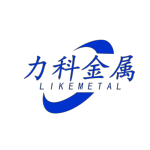309 stainless steel coil, 310 stainless steel coil, 314 stainless steel coil: nickel and chromium content are relatively high, in order to improve the oxidation resistance and creep strength of steel at high temperature. The 309S and 310S are variants of the 309 and 310 stainless steel coils, the only difference being that the carbon content is lower, in order to minimize the precipitation of carbides near the weld.
301 stainless steel coil exhibits obvious work hardening phenomenon during deformation, and is used in various occasions requiring higher strength.
302 stainless steel coil is essentially a variant of 304 stainless steel coil with higher carbon content, which can obtain higher strength by cold rolling.
302B stainless steel coil is a kind of stainless steel coil with high silicon content, which has high resistance to high temperature oxidation.
321 stainless steel coil: Ti is added to 304 stainless steel coil steel, so it has excellent resistance to intergranular corrosion; excellent high temperature strength and high temperature oxidation resistance; high cost and poor workability than SUS304 stainless steel coil. Heat-resistant materials, automobiles, aircraft exhaust pipes, boiler covers, pipes, chemical devices, heat exchangers.
400 Series – Ferritic and Martensitic Stainless Steel Coils.
408—Good heat resistance, weak corrosion resistance, 11% Cr, 8% Ni.
409—The cheapest model (British and American), usually used as a car exhaust pipe, is a ferritic stainless steel coil (chrome steel).
440—High-strength cutting tool steel with slightly higher carbon content, high yield strength can be obtained after proper heat treatment, and hardness can reach 58HRC, which is one of the hardest stainless steel coils. The most common application example is “razor blades”. There are three commonly used models: 440A, 440B, 440C, and 440F (easy to process)
Post time: Nov-19-2022




